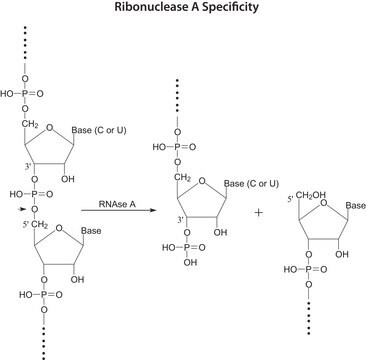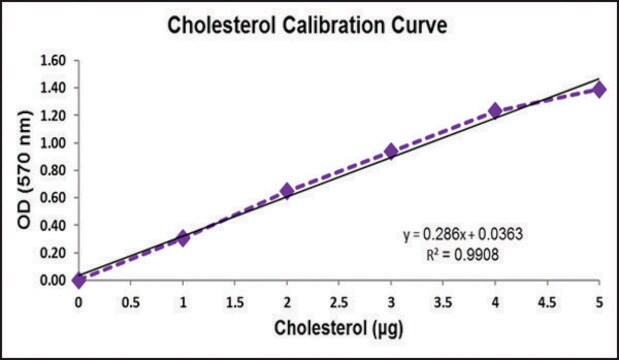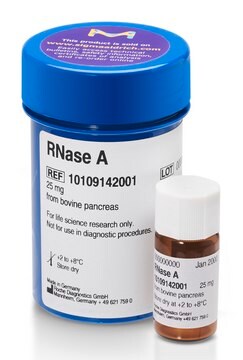おすすめの製品
品質水準
アッセイ
≥98% (HPLC)
溶解性
chloroform: 1 mg/mL
ethyl acetate: 1 mg/mL
DMSO: 5 mg/mL (Solution in DMSO is unstable and thus should be freshly prepared.)
保管温度
−20°C
InChI
1S/C16H13NO7/c1-5(18)10-7(20)4-9-16(2,14(10)22)12-8(21)3-6(19)11(15(17)23)13(12)24-9/h3-4,19-21H,1-2H3,(H2,17,23)/t16-/m1/s1
InChI Key
GEWLYFZWVLXQME-MRXNPFEDSA-N
アプリケーション
Cercosporamide from Cercosporidium henningsii has been used as a mitogen-activated protein (MAP) kinase-interacting kinase (MNK) inhibitor in glioblastoma (GBM)-derived BS287 spheres. It has also been used as an inhibitor of bone morphogenetic protein receptor (BMPR) type I kinase in HepG2 cells and zebrafish embryos in particular to test its rescue potential against developmental defects.
生物化学的/生理学的作用
セルコスポラミドは、当初、広域性の抗真菌活性を有するフィトトキシンとして同定されました。その後の研究から、セルコスポラミドは細胞壁の完全性にかかわるシグナリングパスウェイのメディエーターであるプロテインキナーゼ(Pkc1)のインヒビターとして作用し、極めて強力に真菌を阻害することがわかりました。セルコスポラミドの半合成アナログは、血糖降下作用を有することから、新たな抗糖尿病薬の候補物質となっています。培養がん細胞では、セルコスポラミドによりeIF4E(真核生物翻訳開始因子)のリン酸化がブロックされ、アポトーシス誘導、増殖抑制や軟寒天コロニー形成能の低下が確認されています。eIF4Eリン酸化の抑制効果は、異種移植ヒト組織やマウス肝臓組織で経口投与した場合にも認められています。セルコスポラミドはMnkの強力かつ選択的なインヒビターです。異種移植されたHCT116細胞の腫瘍増殖を低下させるほか、B16メラノーマ細胞の肺転移増殖を抑制しています。よって、Mnk機能とeIF4Eリン酸化のブロックは、抗がんの治療戦略として注目される可能性があります。
調製ノート
DMSO solution (1 mg/ml), kept at -20 °C, is stable for at least three months.
適用法令
試験研究用途を考慮した関連法令を主に挙げております。化学物質以外については、一部の情報のみ提供しています。 製品を安全かつ合法的に使用することは、使用者の義務です。最新情報により修正される場合があります。WEBの反映には時間を要することがあるため、適宜SDSをご参照ください。
Jan Code
SML0172-500UG:
SML0172-500UG-PW:
SML0172-VAR:
SML0172-BULK:
試験成績書(COA)
製品のロット番号・バッチ番号を入力して、試験成績書(COA) を検索できます。ロット番号・バッチ番号は、製品ラベルに「Lot」または「Batch」に続いて記載されています。
Z Hong et al.
Molecular and cellular biology, 14(2), 1017-1025 (1994-02-01)
k9 killer toxin from Hansenula mrakii was used to select a number of resistant mutants from Saccharomyces cerevisiae. Preliminary biochemical and genetic studies showed that some of them acquired structural defects in the cell wall. One of these mutants, the
Jessica K Altman et al.
Blood, 121(18), 3675-3681 (2013-03-20)
Mnk kinases regulate the phosphorylation and activation of the eukaryotic initiation factor 4E (eIF4E), a protein that plays key roles in the initiation of messenger RNA translation and whose activity is critical for various cellular functions. eIF4E is deregulated in
Akihiro Furukawa et al.
European journal of medicinal chemistry, 54, 522-533 (2012-06-26)
Selective peroxisome proliferator-activated receptor gamma (PPARγ) modulators are expected to be a novel class of drugs improving plasma glucose levels without PPARγ-related adverse effects. As a continuation of our studies for (-)-Cercosporamide derivatives as selective PPARγ modulators, we synthesized substituted
Maya P Singh et al.
Journal of industrial microbiology & biotechnology, 37(4), 335-340 (2009-12-25)
Fungi are well known for their vast diversity of secondary metabolites that include many life-saving drugs and highly toxic mycotoxins. In general, fungal cultures producing such metabolites are immune to their toxic effects. However, some are known to produce self-toxic
Akihiro Furukawa et al.
Bioorganic & medicinal chemistry letters, 22(3), 1348-1351 (2012-01-10)
Peroxisome proliferator-activated receptor gamma (PPARγ) is a potential drug target for treating type 2 diabetes. The selective PPARγ modulators (SPPARMs), which partially activate the PPARγ transcriptional activity, are considered to improve the plasma glucose level with attenuated PPARγ related adverse
ライフサイエンス、有機合成、材料科学、クロマトグラフィー、分析など、あらゆる分野の研究に経験のあるメンバーがおります。.
製品に関するお問い合わせはこちら(テクニカルサービス)





